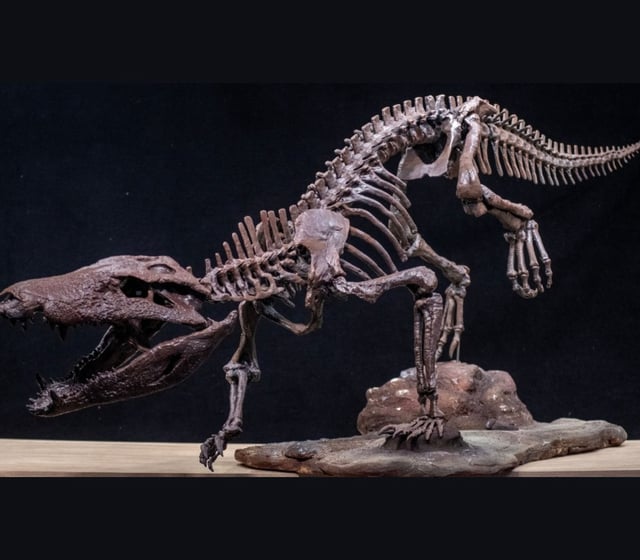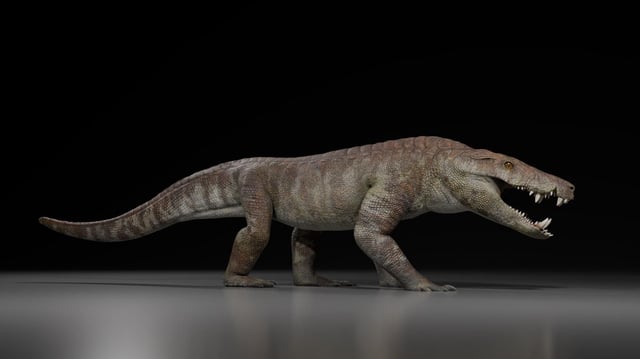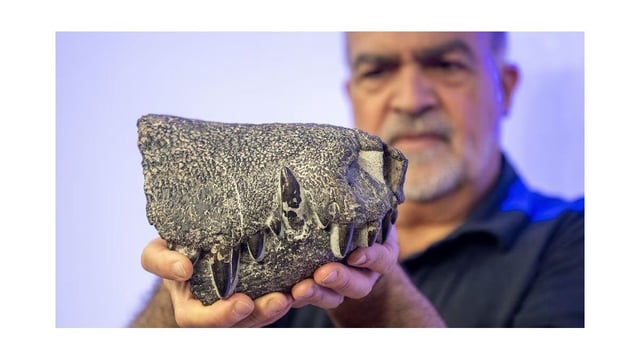Overview
- An international team led by Argentina’s Fernando Novas and Diego Pol published the formal description in PLOS One on August 27, 2025, with collaborators from the University of Tokyo.
- The fossil was recovered from a carbonate concretion near El Calafate and includes a nearly complete skull and extensive skeletal material after years of laboratory preparation.
- Measurements indicate a skull close to 50 cm, a body exceeding 3 meters (with estimates up to about 3.5 m), an approximate mass of 250 kg, and more than 50 serrated teeth suited for cutting flesh.
- Anatomy points to a hypercarnivorous peirosaurid that likely hunted actively in semi‑aquatic to terrestrial settings, capable of preying on small to medium-sized dinosaurs.
- The find represents the first crocodiliform known from the Chorrillo Formation and the second-largest predator identified there, expanding evidence for diverse crocodyliform ecologies in the late Cretaceous.



